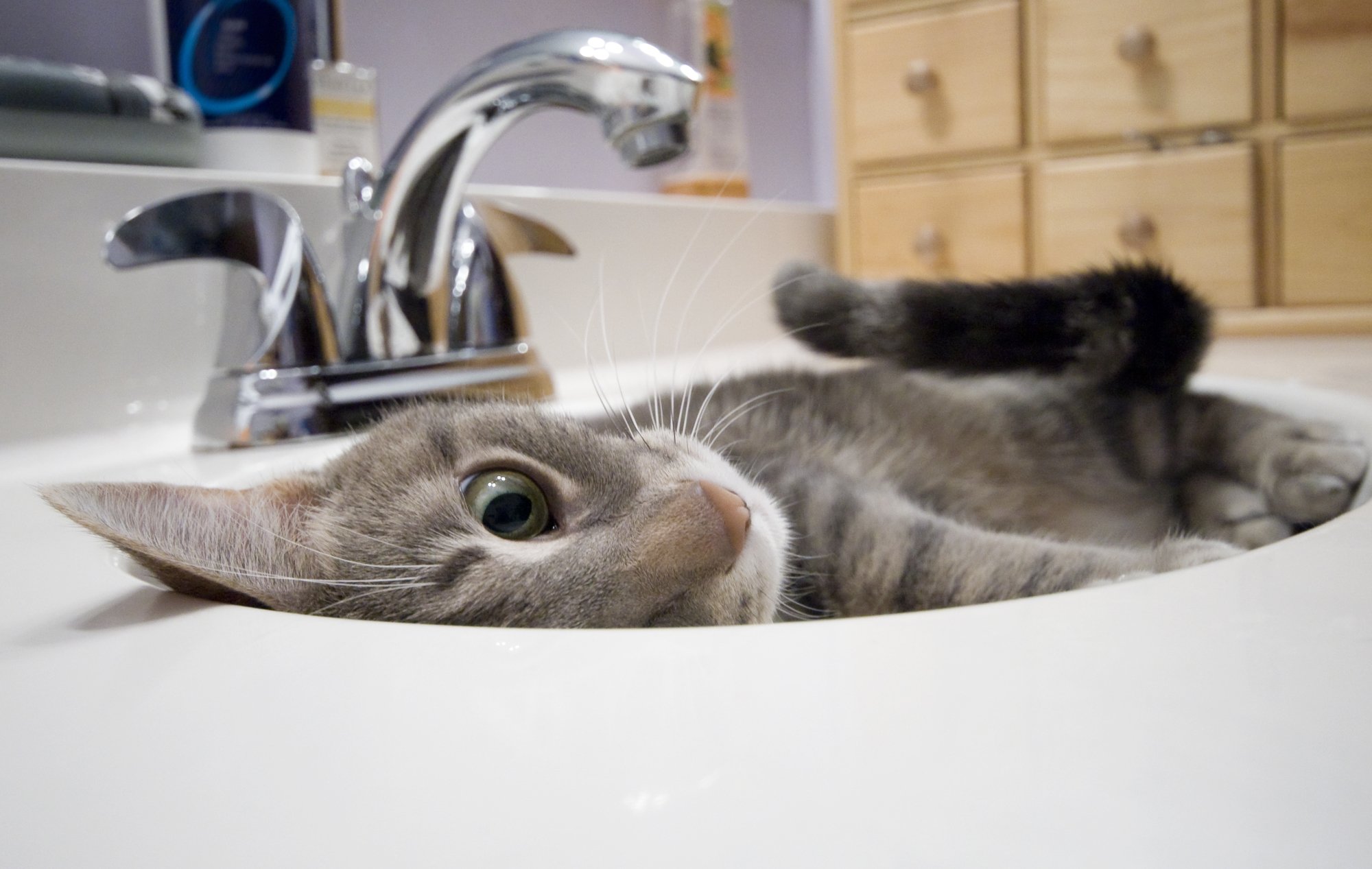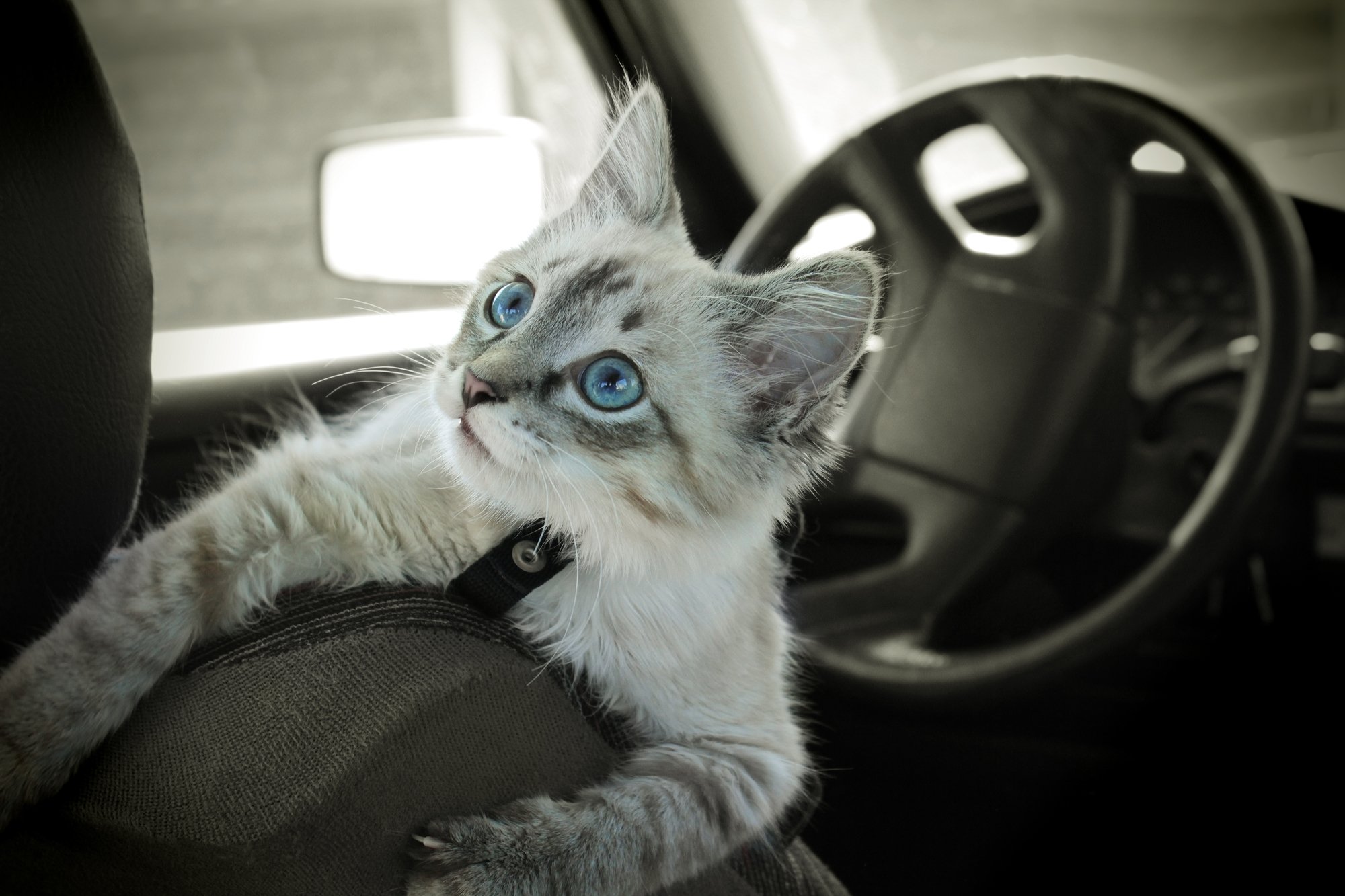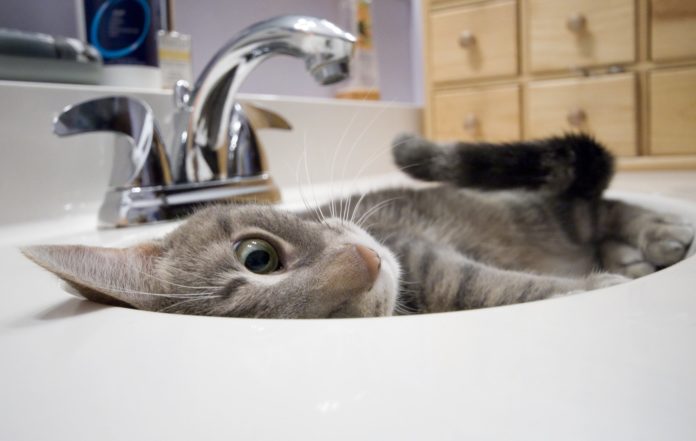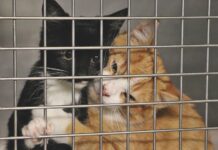
September’s sun can be deceiving. Although many of us consider September to be fall, it is still, for the most part, summer, and the sun is usually still strong and can cause temperatures to rise unexpectedly.
Cats who are overweight or have short, flat faces (such as Persians) are at a higher risk of developing heat stroke. Senior cats and those with heart or respiratory problems will also have more trouble tolerating high temperatures. But any cat can become overheated, needing help to stay comfortable and healthy in high temperatures.
Cats do sweat, but only from their paw pads. Cats keep cool primarily by lounging in shady or cool spots, drinking water, and grooming. Grooming helps to cool their bodies in the same way that sweating helps us. As the cat licks her skin and fur, the moisture evaporates and provides cooling.
To help your cat stay cool in hot temperatures, make sure that she has plenty of fresh water available. If she isn’t big on drinking out of a standard bowl, try a kitty fountain or leaving a faucet dripping to entice her, if possible. Adding some canned food to her kibble will also provide additional moisture to keep her hydrated.
Ventilation is extremely important. Houses are generally cooler than the outdoors in the summer, but this is not always the case. You may have noticed that some rooms in your house can get very hot, such as an attic or a bathroom with poor ventilation. Avoid shutting your cat in these areas. Either check that she is elsewhere in the house before closing the door or keep it open so that she can leave that room to get water or seek a more comfortable spot.
When outside, provide your cat with shady spots. If your cat is lucky enough to have a catio (safe, screened outside enclosure), ensure that she is either able to go in and out of the house freely or set up some shaded areas for her to rest in comfortably.
Signs of Being Too Hot
If your cat is too hot, she may:
-Hide in cool places, like the basement
-Pant
-Resist playing
-Seem lethargic or weak
-Sweat from her paw pads
Heat Stroke
Heat stroke is what happens when your cat gets way too overheated. This can be due to being in an overly hot environment, exercising too much, or being very stressed out. If not addressed, high body temperature can lead to organ failure and death.
Signs of heat stroke include:
-Diarrhea
-Drooling
-Excessive panting
-Muscle tremors
-Rapid pulse and respiratory rates
-Vomiting
-Weakness
Veterinary Attention
If you suspect that your cat has heat stroke, she will require veterinary attention as soon as possible. In the meantime, get her to a cooler spot (such as out of the sun or to a cooler room) and try to lower her temperature with cool, damp towels. Avoid overly cold towels, as being too cold has its own risks, and a rapid temperature drop could be dangerous for your cat.
Once at the veterinarian’s office, the cat will most likely be given fluids to combat dehydration and help regulate her temperature, along with other supportive care measures. Bloodwork may be run to monitor organ function. Depending on the severity of the heat stroke, the cat may need to stay at the hospital under supervision.
Signs of organ damage may take a few days to appear, so monitor your cat for several days after a heat stroke scare and return to the veterinarian if you notice any abnormalities.

Hot Weather and Cars
A little attention to detail can make a world of difference
When traveling with your cat, have a plan in place for keeping her comfortable and safe during stops. If the stop is quick, perhaps you can leave your car locked and running with the air conditioner on and running. However, we stress that this should only be done for very short periods of time, as air conditioners can fail, as can cars. You can also open all of the windows and provide additional air flow by using a battery-operated portable fan, but again, only for very short periods of time (less than five minutes). In either case, the car should be parked in a shaded area. We must stress, though, that it is best not to leave cats unattended in vehicles. When in the car, your cat should be in a carrier for safety, so she won’t be able to slip out.
If you notice a cat in a car on a hot day, evaluate the situation calmly from as far away as possible (many cats don’t like strangers, so leaning up against a window will cause stress). Is the cat lounging comfortably, or peering out the window with curiosity? This is a happy cat who is not in immediate danger, especially if it is an overcast day or the car is parked in shade. If you choose to do so, wait around for five minutes to make sure the owner returns, but don’t berate the owner. That’s for the authorities to take care of. If the owner doesn’t return, and you’re concerned, most states allow you to call 911.
Panting or other signs of distress are cause for concern (panting is not considered normal in cats). Wait up to five minutes for the owner and/or go into the store and politely ask for an announcement to be made calling for the owner. If necessary, you can call the local police or animal control. In some states, it is legal for good samaritans to break into vehicles to rescue a pet if there is sufficient concern for heat-related injury to the pet. In ther states, this can only be done by law-enforcement officials, and in others, there are restrictions concerning which animals (i.e. dogs versus cats) may be rescued in this manner. Please check with your local law enforcement officials for specifics regarding these laws in your municipality.




